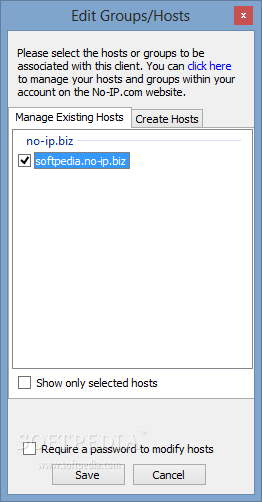

- #No ip duc vpn how to
- #No ip duc vpn install
- #No ip duc vpn drivers
- #No ip duc vpn update
- #No ip duc vpn software
I suggest to install Raspberry PI OS Lite to have a light (headless) environment. Start installing Raspberry PI OS operating system. Step-by-Step Procedure Prepare Operating System

Raspberry PI Zero W (including proper power supply or using a smartphone micro usb charger with at least 3A) or newer Raspberry PI Board.What We NeedĪs usual, I suggest adding from now to your favourite e-commerce shopping cart all needed hardware, so that at the end you will be able to evaluate overall costs and decide if continue with the project or remove them from the shopping cart. You will also need access in your home router to setup port forwarding.
#No ip duc vpn how to
This topic and how to get a dynamic DNS can be found in my How to configure No-IP DUC service in your Raspberry PI tutorial. If you are looking for a VPN, you probably want to reach your VPN server from an external, remote device coming from internet.įor this reason, you need to check if your provider is giving you a public IP address and may be useful getting a DNS record. Applications running across a VPN may therefore benefit from the functionality, security, and management of the private network.“ Before Starting
#No ip duc vpn software
Using an OS based on Debian, it can run Open Source software and drastically help you with your home ICT needs as well as small office needs.Ī common need for increasing networking security and access to your home services from outside is having a VPN (Virtual Private Network) server which grants secure access from an external network to your internal services.įollow peppe8o posts on -> Twitter What is a Virtual Private NetworkĪs described in Wikipedia VPN definition page, “ A virtual private network (VPN) extends a private network across a public network and enables users to send and receive data across shared or public networks as if their computing devices were directly connected to the private network. Raspberry PI can provide a number of linux services able to easily solve problems to manage your home network with cheap solutions. This guide applies also to newer Raspberry PI boards.

In this tutorial, I’m going to show you how to setup a VPN server with a cheap Raspberry PI Zero Wusing PiVPN and send certificates via email. Installing your own vpn server in Raspberry PI with PiVPN make your local network accessible from remote devices in short time Also needs to securing with VPN connections (for example from man in the middle attacks). This saves a lot of time when you deploy VPS multiple times - as you don't have to use your RD credentials each time.( 6) Requests for accessing home or mall office services from remote devices increased in last years as open source self hosted platforms evolved. That's it! Use that snapshot the next time you want to deploy that VPS.Īfter deploying a VPS snapshot you can simply use your "DUC hostname" in any Remote Desktop Client.It will take a few moments to save a snapshot of your VPS. This is located on My Servers -> Manage -> Snapshots -> Take Snapshot. After setting up DUC on your VPS, simply create a snapshot on the Vultr control panel.Allow remote connections on your VPS: WIN Key + R -> sysdm.cpl -> Remote -> Allow Remote Assistance (both).Enable DUC to auto start: File -> Preferences -> Start this application when user logs on.Select the "DUC hostname" that you have created in the 2nd step. When the client launches, sign in, then click on "Edit Hosts".For example, type your "Hostname" then click "Add Host". Add a "DUC hostname" using their members area.

In your web browser, create an account on.
#No ip duc vpn update
Installing and configuring No-IP Dynamic Update Client (DUC) You can follow the steps outlined in this article.
#No ip duc vpn drivers


 0 kommentar(er)
0 kommentar(er)
